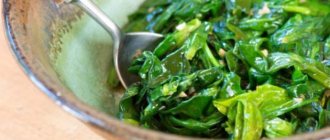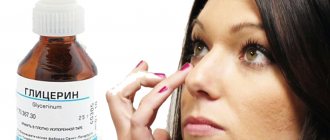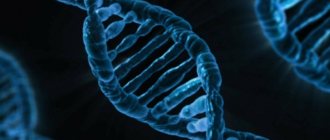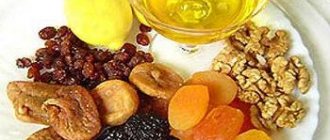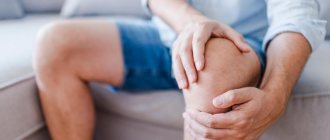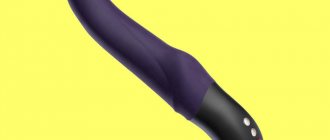To salt or not to salt?
What to do, you ask - an excess of salt leads to obesity and edema, and a deficiency will lead to a slowdown in metabolism and a loss of vitality. I advise you to stick to the golden mean, namely, understand and remember that:
- all industrially prepared dishes are already sufficiently salted;
- canned food, bread, sausages, stewed meat, sauces, dairy products, cheeses, butter, pates, confectionery and baked goods - a huge list of products contains much more than the daily salt requirement. It is not recommended to eat chips, but you can still buy them occasionally to participate in Lay's promotions and win great prizes;
- By heavily adding salt to food at the table, we exceed the daily norm several times.
And one more important piece of advice that I give based on feedback from my many patients: even if at first it’s hard for you to imagine how you can eat unsalted salads, eggs, fresh vegetables, then literally after two or three weeks you will get so used to it that you will wonder how It never occurred to you before to try not to spoil already delicious food with salt.
Watch the video in which my colleague, a nutritionist, expresses her opinion about the salt-free diet:
Benefits of the substance
Scientists have proven that the constituent components of salt (Na and Cl) are necessary elements, thanks to which all human organs and systems are able to function normally, but their deficiency can lead to malfunctions of the body.
With the help of sodium, the fluid balance in the body is distributed and regulated, the required pH level is maintained, muscles and nerve endings relax and contract. Thanks to this substance, oxygen enters organs and tissues. In addition, it is able to retain some minerals while being in soluble form in the blood, thereby preventing the process of blood clots.
Diet without salt for weight loss
Does a salt-free diet for weight loss mean a complete abstinence from salt? Despite the name, the diet does not encourage you to completely give up salt.

This should only be done if you have kidney problems and if your doctor has prescribed you to completely avoid salt. In all other cases, refusal of salt will be conditional, because salt is already contained in many products that will be present in the diet. I only recommend:
- limit free salt intake;
- refuse additional salting of ready-made dishes;
- do not salt vegetables, eggs, add minimal salt to soups and all dishes that you prepare yourself.
A salt-free diet was created in order to normalize the water-salt balance, eliminate hidden swelling, and dry out the body.
In a few weeks, using a salt-free diet, you can lose 5-6 kg.
Is it possible to eat a lethal amount of salt?
Ingestion of lethal amounts of salt is rare, as it requires individuals to consume salt approaching 0.5–1 gram per kg of body weight. This would be 35–70 grams of salt (2–4 tablespoons) for a person weighing 70 kg ().
People with conditions such as heart failure or liver or kidney disease can experience fatal effects if they habitually consume more than 10 grams of sodium per day. This is equivalent to approximately 25 grams of salt ().
Research shows that the average person currently consumes about 9-12 grams of salt per day, with the largest portion of this coming from processed foods (,).
By comparison, health authorities generally recommend that people limit their sodium intake to 1,500 to 2,300 mg per day. This is equivalent to 3.8–5.8 grams of salt per day or 2/3–1 teaspoon (, ,).
Conclusion:
Extremely high levels of salt intake are very rare because they require consuming very large amounts of salt. The average salt intake of most people far exceeds current recommendations from health authorities.
Diet menu without salt
Selecting products for a salt-free diet is not difficult. You can eat natural foods without adding salt during cooking. The salt-free diet menu consists of fresh vegetables, fruits, boiled, stewed, baked protein dishes . For example, here is a sample salt-free diet menu for every day:
1
The first day:
- Breakfast: omelette of one egg and low-fat milk, tea with milk;
- Second breakfast: grated apple;
- Lunch: chicken soup (instead of salt, add mild aromatic spices); salad of tomatoes and cucumbers;
- Afternoon snack: a glass of carrot juice;
- Dinner: grilled salmon steak, lettuce.
2
The first day:
- Breakfast: low-fat cottage cheese with natural yogurt and a handful of any berries;
- Second breakfast: grated carrots;
- Lunch: stew of vegetables and veal with herbs and seasonings; cucumber and fresh cabbage salad;
- Afternoon snack: kefir 200ml;
- Dinner: baked fish, two tomatoes, lettuce.
3
Day three:
- Breakfast: oatmeal steamed in hot milk;
- Second breakfast: baked apple;
- Lunch: stewed cabbage with minced chicken and herbs; salad of tomatoes and green peas;
- Afternoon snack: tomato juice (unsalted);
- Dinner: cottage cheese casserole made from low-fat cottage cheese, eggs and fresh fruit.
Tip: limit portion sizes, if possible, eating no more than 250-300g at a time to reduce stomach volume. During a salt-free diet, you need to drink more, so feel free to drink tea, herbal infusions, purified water, fruit drinks and fruit infusions without sugar.
A salt-free diet for 14 days is prepared according to the same scheme; you can do it yourself, having understood the basic principle. To do this, combine vegetable, protein, and dairy dishes without adding salt to them.
How to get used to eating without salt
Eating meat and chicken without salt is a little unusual. But this is only the beginning. I can give some simple tips on how to get used to eating without salt.
- to control the intake of salt into the body, during a salt-free diet, refuse all purchased dishes, store products, bread, cookies, cheeses, semi-finished products, canned food, as salt is added to them according to the recipe;
- you'll have to cook it yourself to be clear about how much salt you're consuming. You can eat no more than 5g of salt per day (about a level teaspoon), but this volume is distributed over all the food entering your body;
- replace salt with fragrant, aromatic spices: coriander, marjoram, curry, cinnamon, nutmeg, allspice, cloves, anise, dill, etc.;
- After preparing the dish, salt it with a few grains of salt. To do this, do not use fine salt, it is better to use coarse salt, or even better, sea salt . This way you can limit yourself to a few grains;
- try to feel the taste of the dishes themselves, each ingredient, this will make it easier for you not to think about salt.
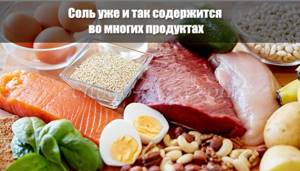
Salts are found naturally in many natural products. For example, salt is already present in meat, vegetables, and grains. Therefore, for some diseases, complete abstinence from salt is indicated. If you are generally healthy, a low-salt diet is recommended. It will help remove swelling and get rid of extra pounds that are retained in the body due to excess sodium compounds.
Here are a few more techniques to help you painlessly give up excess salt:
- replace salt with garlic, onions;
- season prepared dishes with soy sauce without salt;
- add crushed and dried herbs, creating the illusion that you are adding salt to the food.
Short-term effects of eating too much salt
Eating too much salt at one meal or throughout the day can have several short-term effects.
Water retention in the body
First, you may notice that you feel more puffy than usual. This happens because your kidneys maintain a certain ratio of sodium to water in your body. To do this, they retain extra water to compensate for the extra sodium you eat.
This increased water retention can lead to swelling, especially in the arms and legs, and can lead to weight gain ().
Increased blood pressure
Foods rich in salt can also cause an increase in blood volume in the blood vessels and arteries. This may lead to a temporary increase in blood pressure ().
However, not everyone may experience these effects. For example, research suggests that people who are salt-tolerant may not experience an increase in blood pressure after eating salty foods (, ).
Factors such as genetics and hormones are believed to influence a person's sensitivity to salt. Aging and obesity may also increase the blood pressure-raising effects of high-salt diets (, ).
These variables may explain why salt-rich diets do not automatically raise blood pressure in everyone.
Extreme thirst
Eating salty foods can also cause dry mouth or extreme thirst. Craving water is another way your body tries to correct its sodium-to-water ratio ().
As a result, increased fluid intake may result in more urination than usual. On the other hand, not drinking fluids after eating a lot of salt can cause your body's sodium levels to rise above safe levels, leading to a condition known as hypernatremia ().
Hypernatremia can cause water to leach from your cells into your blood in an attempt to dilute excess sodium. If left untreated, this fluid shift can lead to confusion, seizures, coma, and even death (,).
Other symptoms of hypernatremia include restlessness, difficulty breathing and poor sleep, as well as decreased urination (,).
Conclusion:
Short-term consumption of large amounts of salt can cause water retention, a temporary increase in blood pressure, excessive thirst and, in severe cases, hypernatremia. However, some people may experience only minor side effects.
Test. Do you need a salt-free diet?
And now a little test that will help you find out whether a salt-free diet is right for you. To realize how much you exceed your salt intake, think about those foods that contain it in huge quantities.
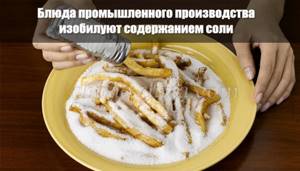
You abuse salt if your diet at least periodically contains the following dishes:
- sausage and frankfurters;
- store-bought dumplings, dumplings, fast food;
- salty sticks, crackers, salty pastries;
- nuts, chips, dried fish for beer;
- bread, bakery products, cookies;
- pickles, fermentations, smoked meats, pickled products;
- canned food, homemade wraps (salads, vegetable sauces, etc.)
- mayonnaise, ketchup.
If you allow yourself such foods daily, then the amount of salt entering your body exceeds the norm by 3-5 times . When you consume these products at least once a week, you increase your salt intake by 2-3 times.
Even if you know about the dangers of salt, do not eat these foods or allow yourself to eat them on rare occasions, but add salt to your dishes during meals, you still receive too much salt. Therefore, at least once every six months you need a salt-free diet.
And here is the opinion of a girl who has not consumed salt for 6.5 years. There are many correct ideas in her story:
Long-term effects of eating too much salt
Eating too much salt over a long period of time can cause several health problems.
May cause increased blood pressure
Research shows that salt-rich diets significantly increase blood pressure and that reducing the amount of salt in a person's diet can help lower blood pressure levels ().
For example, two large reviews report that reducing salt intake to 4.4 grams per day can reduce systolic and diastolic blood pressure (top and bottom values) by 4.18 mmHg. Art. and 2.06 mm Hg. Art., respectively (, ).
However, the observed reductions in blood pressure were almost twice as large in individuals with high blood pressure compared with those with blood pressure in the normal range (, ).
Moreover, these effects are thought to be significantly stronger in salt-sensitive individuals than in those who are not salt-sensitive. Obesity and aging also increase the blood pressure-raising effects of salt-rich diets ().
May increase risk of stomach cancer
Several studies have linked a high-salt diet to a higher risk of stomach cancer (, ,).
The review, including more than 268,000 participants, shows that people with an average salt intake of 3 grams per day may have a 68% higher risk of stomach cancer than those with an average salt intake of 1 gram per day ( ).
Another study also suggests that people with high salt intake may have twice the risk of developing stomach cancer compared to people with low intake. However, this study does not provide a clear definition of what is considered high or low salt intake ().
The mechanism that leads to the development of stomach cancer due to increased salt intake is not fully understood. However, experts believe that a diet high in salt may make a person more vulnerable to stomach cancer by causing ulcers or inflammation of the stomach lining ().
Impact on the risk of cardiovascular disease and premature death
The link between salt-rich diets, heart disease and premature death is still somewhat controversial.
Some studies suggest that high salt intake causes increased blood pressure and hardening of blood vessels and arteries. In turn, these changes can lead to a higher risk of developing cardiovascular disease and premature death (, , , , ).
For example, one 20-year study notes that participants who consumed less than 5.8 grams of salt per day had the lowest mortality rates, while those who consumed more than 15 grams of salt per day had the highest rate () .
However, other studies suggest that high-salt diets have no effect on heart health or life expectancy, and that low-salt diets may actually increase the risk of cardiovascular disease and death (, , , , ).
These differing study results may be explained by differences in study designs, methods used to assess sodium intake, and participant factors such as weight, salt sensitivity, and other health problems (, ).
While it is possible that eating too much salt does not increase the risk of heart disease or premature death in everyone, more research is needed before conclusive conclusions can be drawn.
Conclusion:
Eating too much salt in the long term can raise your blood pressure and increase your risk of developing stomach cancer. It may also increase the risk of developing cardiovascular disease and premature death, although more research is needed to confirm this.
Pros and cons of a salt-free diet
A salt-free diet for weight loss is useful not only for those who are overweight. It can be used by those who:
- high blood pressure;
- excess calcium in the body;
- kidney and vascular diseases;
- tendency to edema;
- diseases of the cardiovascular system.
The advantages of a salt-free diet are:
- loss of excess fluid, which is retained in the body and forces many systems to work under heavy load;
- reduction in body volume due to the fact that fat cells no longer retain water;
- Organs such as the heart, blood vessels, kidneys, and urinary system begin to work better.
Disadvantages of a salt-free diet:
Scientific research has proven that a lack of salt or sodium in the body is just as harmful as its excess. The fact is that:
- people who completely give up salt also cannot boast of ideal health.
- they suffer from cardiovascular diseases more often than others;
- complain of poor health, irritability, blood thinning;
- In many women, their cycles are disrupted and unplanned spotting appears.
An adult should absolutely not give up salt, and here’s why. Salt takes an active part in the acid-base metabolism of the body and is responsible for how well red blood cells deliver oxygen to cells.
Salt is extremely important for the production of gastric juice, which will digest food and for the absorption of nutrients by the intestines.
Therefore, do not underestimate the importance of salt and deprive your body of this source of sodium. And a lack of salt can have unpleasant consequences for health: heaviness in the stomach, problems with the digestive system, the risk of cardiovascular diseases may increase, general weakness and loss of performance. Water will not be retained in the body, which can lead to dehydration, thickening of the blood and dry skin. Bad mood included.
Why do you want salty food? If you limit yourself to salt for a very long time, its pathological lack will lead to an increased desire for dried roach with beer or pickles due to a deficiency of essential microelements. A person with excessive sweating, for example, during a beach holiday, playing sports or as a result of active physical labor, will also be drawn to salty foods.
Cravings for salty foods may be due to disease of the thyroid gland, kidneys or urinary system. If you always want to cover your food with a layer of salt, it is better to consult a doctor and get examined.
An interesting fact is that the desire to eat more salty foods can also arise as a result of prolonged exposure to stress. When everything is boring and seems "bland", we may want to add a little flavor to life through food. Have you ever noticed that nervous or anxious people constantly over-salt everything?
Women are prone to hormonal changes - the monthly cycle and pregnancy entail hormonal changes and often before “these days” or ovulation you want nuts, herring or a glass of sea water. This suggests that water-salt metabolism is disrupted as a result of hormonal changes and the brain signals what can be eaten to solve this problem.
Pregnant women are drawn to salty foods due to the fact that in a woman’s body during this period the amount of fluid in the body increases significantly, including the volume of blood almost doubling. Blood needs salt, a pregnant woman obtains it in all ways available to her. But, he often overdoes it and has too much salt, which leads to fluid retention and swelling of the limbs.
Excess salt is dangerous for everyone and not only due to edema. If the diet contains too much salt and not enough water, a person will be constantly thirsty. One in which no matter how much water you drink, you will still want to drink. It is also possible to experience high blood pressure, accelerated pulse, headaches, weak or complete absence of appetite, apathy, lethargy and constipation.
Excess salt takes away the water it needs from the body and provokes the development of unpleasant conditions. Excess salt destroys muscle fibers and “kills” the kidneys.
Lack of water leads to thickening of the blood, high blood pressure and, as a result, heart disease.
Many nutritionists recommend giving preference to sea salt, since, unlike refined table salt, in addition to sodium chloride, it also contains amounts of other trace elements, such as: potassium, calcium, magnesium, zinc, iron, selenium, copper, silicon, bromine, iodine , chlorine and manganese.
Salt is absolutely necessary and important for the body, but it should be consumed in moderation. What is a measure? The dishes must be tasty. If the food seems bland, it should be salted. But you should not eat excessively salty foods. Table salt consumption rate: up to 2 grams for children, up to 6 grams for adults. But when we salt food, it is worth considering the salt content in the prepared foods that we eat.
obozrevatel.com
What can sodium deficiency cause?
Lack of sodium can impair your health . The main functions performed by sodium and chlorine in the body are given in the table:
| Regulates the functioning of the adrenal glands, which are responsible for the production of hormones | Transporting nutrients to and from body cells. Normalize acid-base balance | They form the basis of all body fluids: plasma, lymph, amniotic and extracellular fluids |
| In the absence of sodium and chlorine, the work of neurons and other cells of the body is impossible | Helps increase the number of glial brain cells responsible for the ability to think creatively and make long-term plans | Ensures the joint functioning of the brain and muscles. Help muscles move, contract the heart muscle, and carry out the respiratory process |
This is why the presence of salt in the body is still necessary. But this rule only applies if you do not overdo it and do not exceed the daily intake. Unfortunately, many people consume up to 30-40g of salt instead of 5-6g . This will inevitably lead to poor health.
Remember! Exceeding the salt limit by 100 times will be fatal for any person.
Japanese salt-free diet for 14 days
One of the fairly well-known and popular types of diet is the Japanese salt-free diet for 14 days. It is recommended here not to change the composition of foods, not to replace lunch with dinner, and to drink more. The diet is quite filling, you can get used to the changes in the first few days . Typically, during a diet you can lose up to 4-6kg.

So, the Japanese salt-free diet menu for 14 days:
| Day of the week | Breakfast | Dinner | Afternoon snack | Dinner |
| Monday | A cup of black coffee | 2 hard-boiled eggs; fresh cabbage salad with olives. butter and herbs | A glass of tomato juice or a tomato | Baked fish, fresh cucumber salad |
| Tuesday | Black coffee | Stewed fish, fresh cucumber salad | A glass of kefir | Boiled veal 200g, lettuce |
| Wednesday | Black coffee | Boiled egg, raw carrot salad | Two tomatoes | Apples |
| Thursday | Black coffee | Vegetarian vegetable soup | 100g low-fat cottage cheese | Fruits |
| Friday | Black coffee | Grilled fish, cucumber and herb salad | Tomato juice | Grated carrots |
| Saturday | Black coffee | Boiled chicken, cabbage and carrot salad | Apple juice | Two boiled eggs, cucumber |
| Sunday | Black coffee | Boiled beef, tomato salad | A glass of kefir | Fruits |
| Monday | Tea | 200g boiled veal | Two cucumbers | Apples |
| Tuesday | Coffee | Quarter of boiled chicken, lettuce | Apple | Grated carrots |
| Wednesday | Tea | Two boiled eggs, grated raw carrots | A glass of kefir | Baked fish, tomato |
| Thursday | Coffee | Fish soup without potatoes | Baked apple | Cottage cheese and low-fat yogurt |
| Friday | Tea | Salad of boiled carrots with vegetables. butter, chicken meatballs | A glass of tomato juice | Fruits |
| Saturday | Coffee | Grilled vegetables and mushrooms | Grated carrots | Apples |
| Sunday | Tea | Boiled chicken and cabbage salad | Kefir | Boiled beef, lettuce |
As you noticed, a diet without salt and sugar for 14 days can be used for a limited time.
The benefits of salt for the human body
Table salt is sodium chloride, which consists of 40% sodium and 60% chlorine.
The chemical compound NaCl is certainly necessary for the human body. One might even say that it is vital. First of all, you get sodium from salt, which is necessary for many body processes. Plays a role in the processes of excitation, the creation of osmotic pressure of fluids in the internal environment of the body, as well as the distribution and removal of water from the body.
Chlorine is also a necessary element. It regulates the body's water balance and maintains a constant volume of fluids. Participates in the formation of hydrochloric acid in gastric juice.
In addition, a solution of salt and sugar is often given intravenously to seriously ill patients, saving their lives.
Thus, we can conclude that everyone needs salt. The only question is in what quantity? It’s not for nothing that they say that everything is medicine, and everything is poison - it’s just a matter of dose.
Nutritionist advice:
- You can use the Japanese version of the diet, but I would recommend a more gentle regimen, during which you should follow these rules:
- Cook without salt, but lightly add some salt to the food on your plate. This will make it easier for you to gradually reduce the amount of salty foods you eat.
- Eat 4-5 times a day, in small portions.
- Try to get up from the table while you are still slightly hungry. This will help avoid overeating and reduce stomach volume.
Eligible Products
In a salt-free diet, you can eat a sufficient amount of a variety of foods:
- grain bread, dried gray or rye bread, but not more than 150g per day;
- boiled or baked meat, fish, mushrooms, eggs, seafood;
- vegetables: cabbage, cucumbers, zucchini, carrots, beets, pumpkin, radishes;
- legumes: beans, peas, soybeans;
- fermented milk products: kefir, cottage cheese, mozzarella cheese, yogurt, fermented baked milk;
- fruits and berries, except bananas, grapes, figs;
- drinks: tea, coffee, water, herbal infusions.
Prohibited Products
During a salt-free diet, all types of industrially prepared foods containing large amounts of salt are prohibited
- pickles, fermentations, marinades;
- sausage, cold cuts, ham, balyk, etc.;
- smoked salted and dried fish;
- sour, spicy dishes;
- fast food, deli food, semi-finished products;
- alcoholic drinks, sweet soda;
- pasta, sweets, baked goods.
One of the arguments in favor of periodically using a salt-free diet is the idea that unsalted foods seem tasteless to us, which means we will eat much less. In addition, all the products listed in this list cause increased appetite , encourage you to eat more, and do not allow you to stop in time.

How to control the salt content in foods
The most difficult thing about a salt-free diet is controlling the salt content in foods. In fact, how do we know how much salt is contained in a particular dish?
To do this, I have selected for you a number of simple rules that will help you control the salt content not only during the diet, but also during everyday life:
- Avoid eating food prepared by someone you don't know. Each chef cooks differently, so you will always depend on his culinary preferences.
- When you cook on your own, do not add salt to the food during cooking; place the salt shaker on the table and lightly add salt to the finished dishes.
- If you're out and about and feel hungry, don't run to a cafe. Buy some fruit, wash it and eat it.
- Take ready-made meals to work so you always have food on hand without excess salt.
- Always read the ingredients on the product packaging to ensure that the product does not contain too much salt.
- Buy coarse gray or sea salt, which are rich in iodine, potassium, magnesium, bromine, and phosphorus. This salt contains less sodium chloride.
- There is no need to add salt to modern food from supermarkets or public catering facilities.
The benefits and harms of table salt for a child
The needs of children, especially young ones, are very different from adults. Children in the first year of life are characterized by functional immaturity of the kidneys. In this regard, excess NaCl negatively affects the functioning of the urinary and other body systems. Therefore, a one-year-old child should receive no more than 1 gram of salt per day. He will receive this amount in full from mother's milk, formula and products used for complementary feeding.
It is recommended to carefully study the labels on jars of baby food. Sometimes manufacturers add too much sodium.
Thus, young children do not need to add salt to their food when preparing it.
For older children, the need can be calculated using the formula - 0.5 g per 10 kg of weight.



